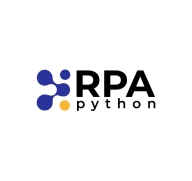


Blue Prism Cloud and Python RPA are competing in robotic process automation. Python RPA is considered to have the upper hand due to its extensive customization options for businesses needing tailored automation.
Features: Blue Prism Cloud features enterprise-level scalability, a comprehensive automation suite, and integration with existing systems. Python RPA offers extensive customization, community-driven modules, and significant flexibility.
Ease of Deployment and Customer Service: Blue Prism Cloud includes a structured deployment model with extensive support channels. Python RPA provides a flexible deployment strategy, relying on community-driven support, benefiting companies with internal expertise.
Pricing and ROI: Blue Prism Cloud generally has higher setup costs with structured pricing, offering long-term ROI for enterprises needing robust solutions. Python RPA, with its open-source model, incurs lower initial costs and offers substantial ROI through flexible pricing and enhancements.



Automate offers a user-friendly solution with a drag-and-drop interface for efficient task automation and integration with major platforms like SAP and Azure, making it ideal for quick deployment with minimal coding and training.
Automate provides powerful features for businesses seeking efficient automation, offering compatibility with databases, email integration, and cloud platforms. Its simple interface supports both beginners and experienced users, simplifying tasks like invoice processing, HR automation, and data transformation. Cost-effective pricing and flexible licensing enhance its appeal while integration capabilities and scheduling tools ensure smooth workflow automation.
What are Automate's Key Features?In industries such as healthcare, banking, and logistics, Automate is used for tasks like invoice payment automation, data transformation, and task automation. This leads to streamlined processes and reduced manual workload, illustrating its value in enhancing operational efficiency through diversified workflows.
The Thoughtonomy Virtual Workforce is a highly flexible intelligent automation platform. It uses software to replicate the way people work in existing applications and systems, the processes they follow, and the decisions they make, to deliver automation without disruption.
Users employ Python RPA for automating repetitive tasks and streamlining workflows, reducing manual errors, and enhancing efficiency in processing data, web scraping, and application integration.
Python RPA is valued for its ability to handle complex automation processes, its flexibility, and its compatibility with different systems. It is particularly beneficial for large-scale data handling and business process automation. Users find the extensive library and strong community support helpful for swift issue resolution and knowledge sharing. Its intuitive design and clear documentation simplify the learning curve and implementation. However, documentation can lack depth, making troubleshooting challenging. The setup process can be cumbersome, requiring more intuitive guidance. Execution speed can be slow, causing inefficiencies in workflows, and there is a need for better support and resources for developers. Some users report difficulties with integration into existing systems, suggesting enhanced compatibility and flexibility are needed.
What are the key features?In industries where large-scale data processing is essential, such as finance or healthcare, Python RPA helps automate data entry, validation, and reporting, significantly reducing manual labor and improving accuracy. In retail, it integrates with e-commerce platforms to automate order processing and inventory management, ensuring smooth operations. Other sectors, like logistics, benefit from Python RPA by streamlining dispatch and tracking processes, enhancing operational efficiency and customer satisfaction.
We monitor all Robotic Process Automation (RPA) reviews to prevent fraudulent reviews and keep review quality high. We do not post reviews by company employees or direct competitors. We validate each review for authenticity via cross-reference with LinkedIn, and personal follow-up with the reviewer when necessary.